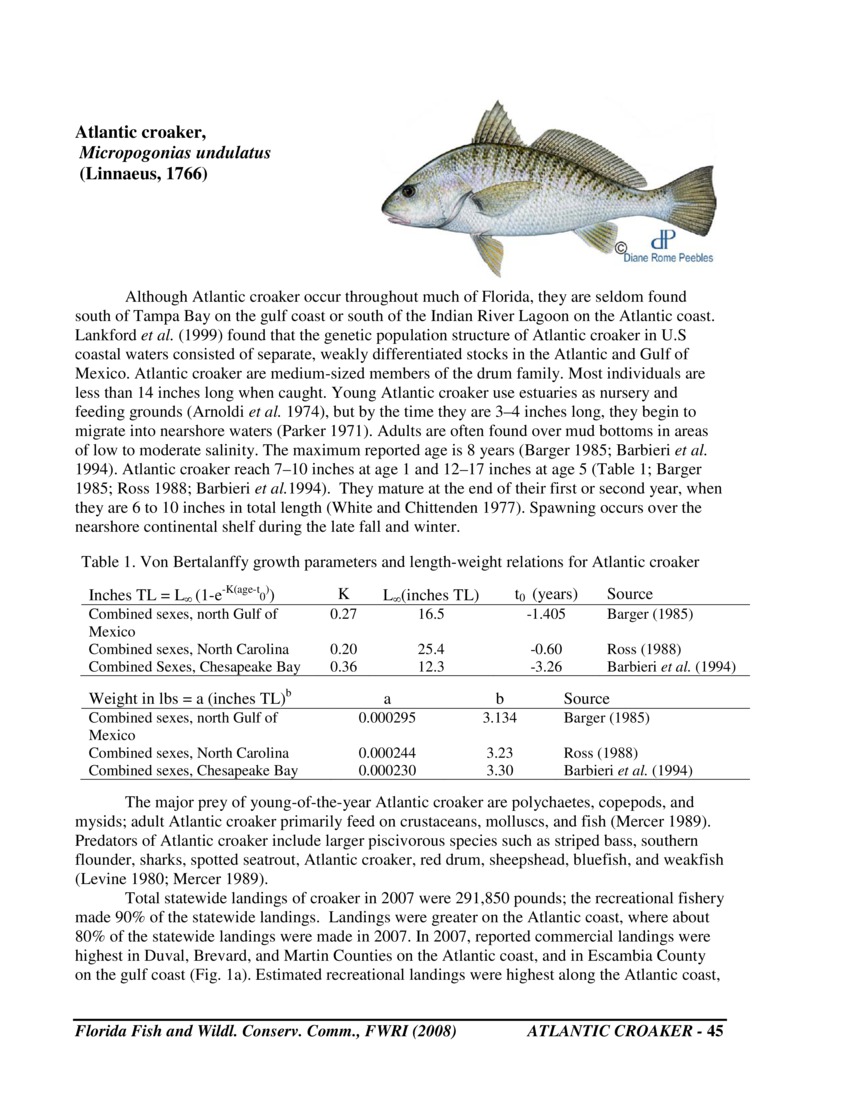Atlantic Croaker, Micropogonias undulates (Linnaeus, 1766)
Although Atlantic croaker occur throughout much of Florida, they are seldom found south of Tampa Bay on the gulf coast or south of the Indian River Lagoon on the Atlantic coast. Lankford et al. (1999) found that the genetic population structure of Atlantic croaker in U.S coastal waters consisted of separate, weakly differentiated stocks in the Atlantic and Gulf of Mexico. Atlantic croaker are medium-sized members of the drum family. Most individuals are less than 14 inches long when caught. Young Atlantic croaker use estuaries as nursery and feeding grounds (Arnoldi et al. 1974), but by the time they are 3–4 inches long, they begin to migrate into nearshore waters (Parker 1971). Adults are often found over mud bottoms in areas of low to moderate salinity. The maximum reported age is 8 years (Barger 1985; Barbieri et al. 1994). Atlantic croaker reach 7–10 inches at age 1 and 12–17 inches at age 5 (Table 1; Barger 1985; Ross 1988; Barbieri et al.1994). They mature at the end of their first or second year, when they are 6 to 10 inches in total length (White and Chittenden 1977). Spawning occurs over the nearshore continental shelf during the late fall and winter.
Publisher - Florida Fish and Wildlife Conservation Commission (FWC), Fish and Wildlife Research Institute (FWRI)
Subjects - Fish, Atlantic Croaker, Micropogonias undulates
Citation: FWRI. 2008. Atlantic Croaker, Micropogonias undulates (Linnaeus, 1766). St. Petersburg (FL): Florida Fish and Wildlife Conservation Commission (FWC), Fish and Wildlife Research Institute (FWRI). 6 pp http://myfwc.com/media/194607/atlantic_croaker.pdf
